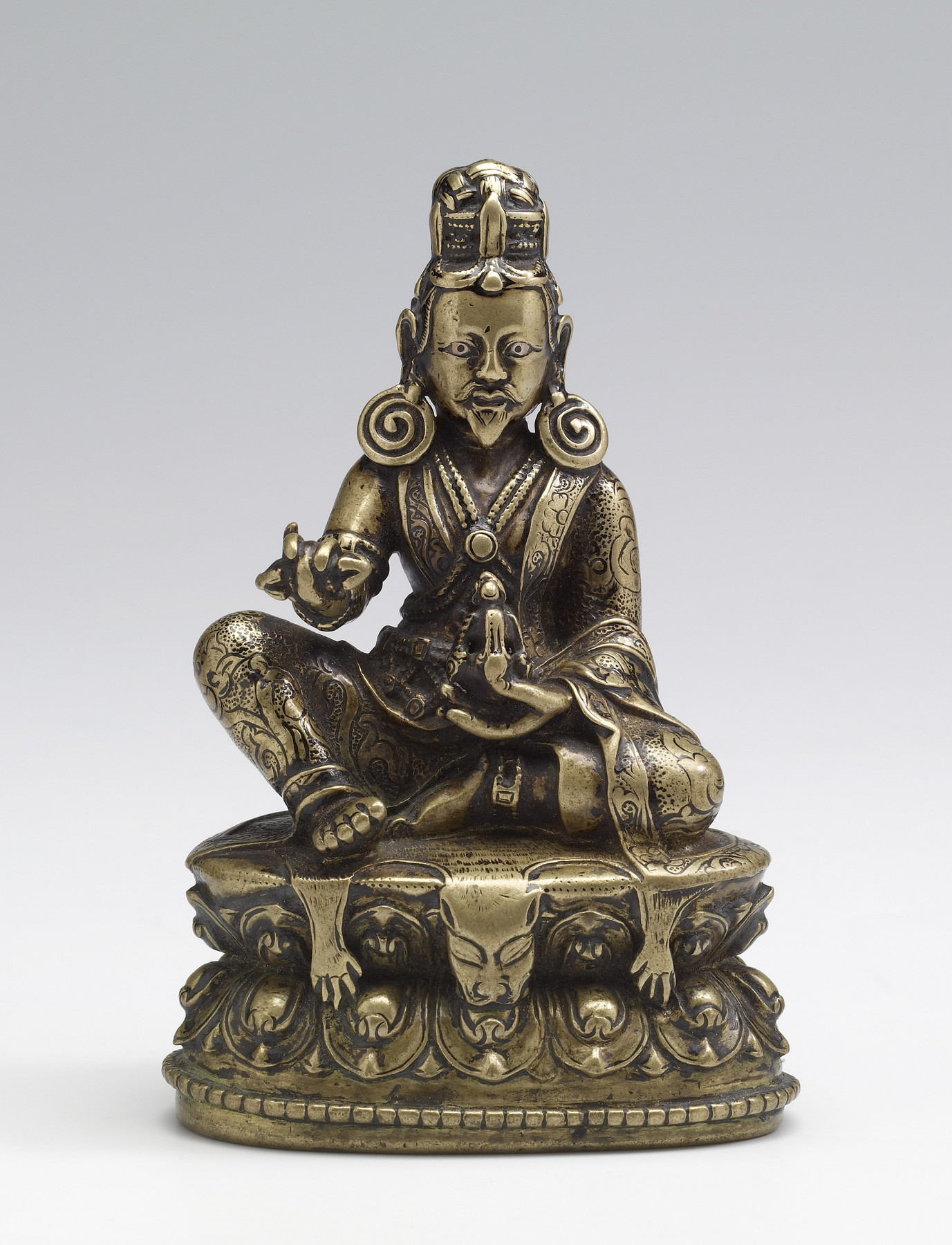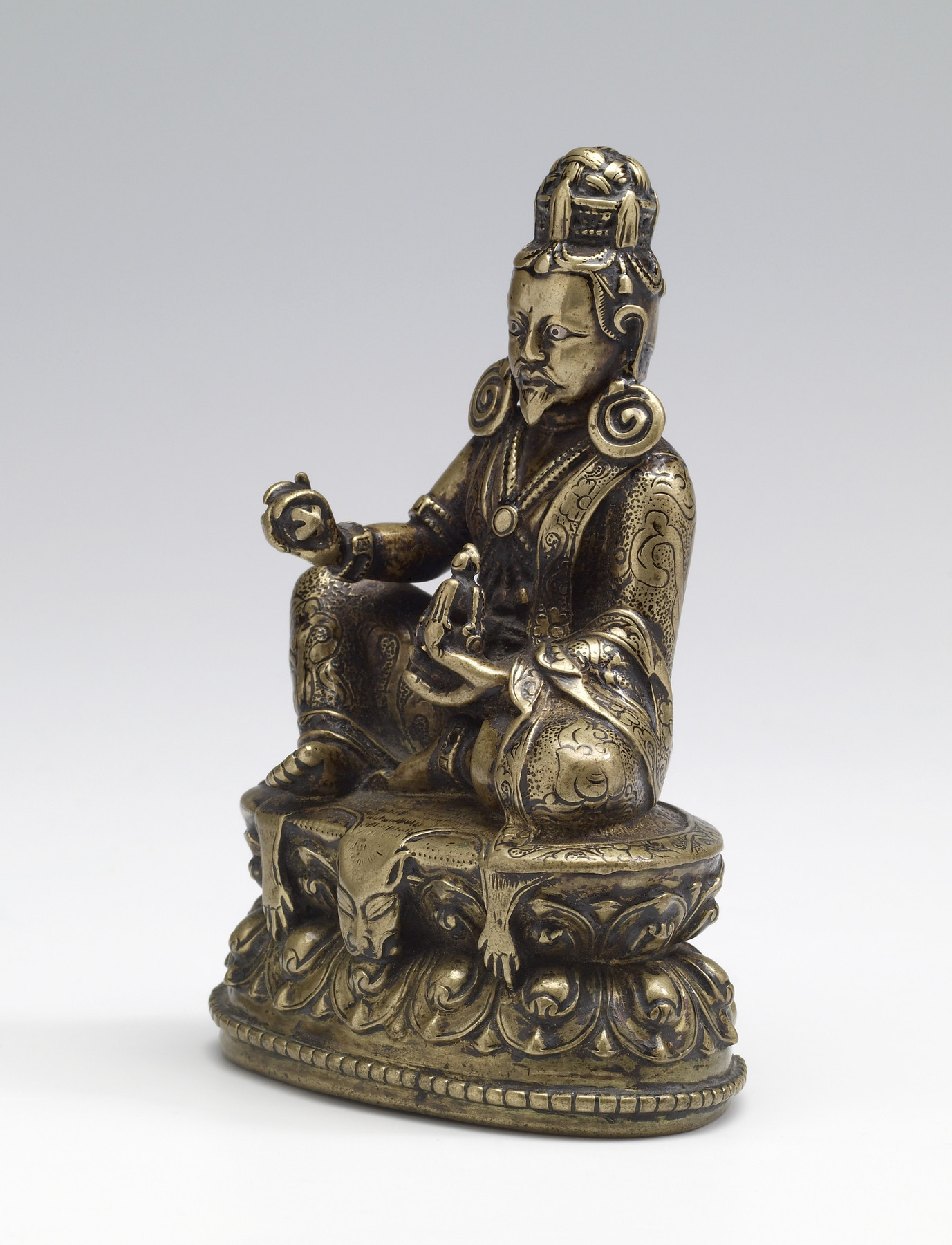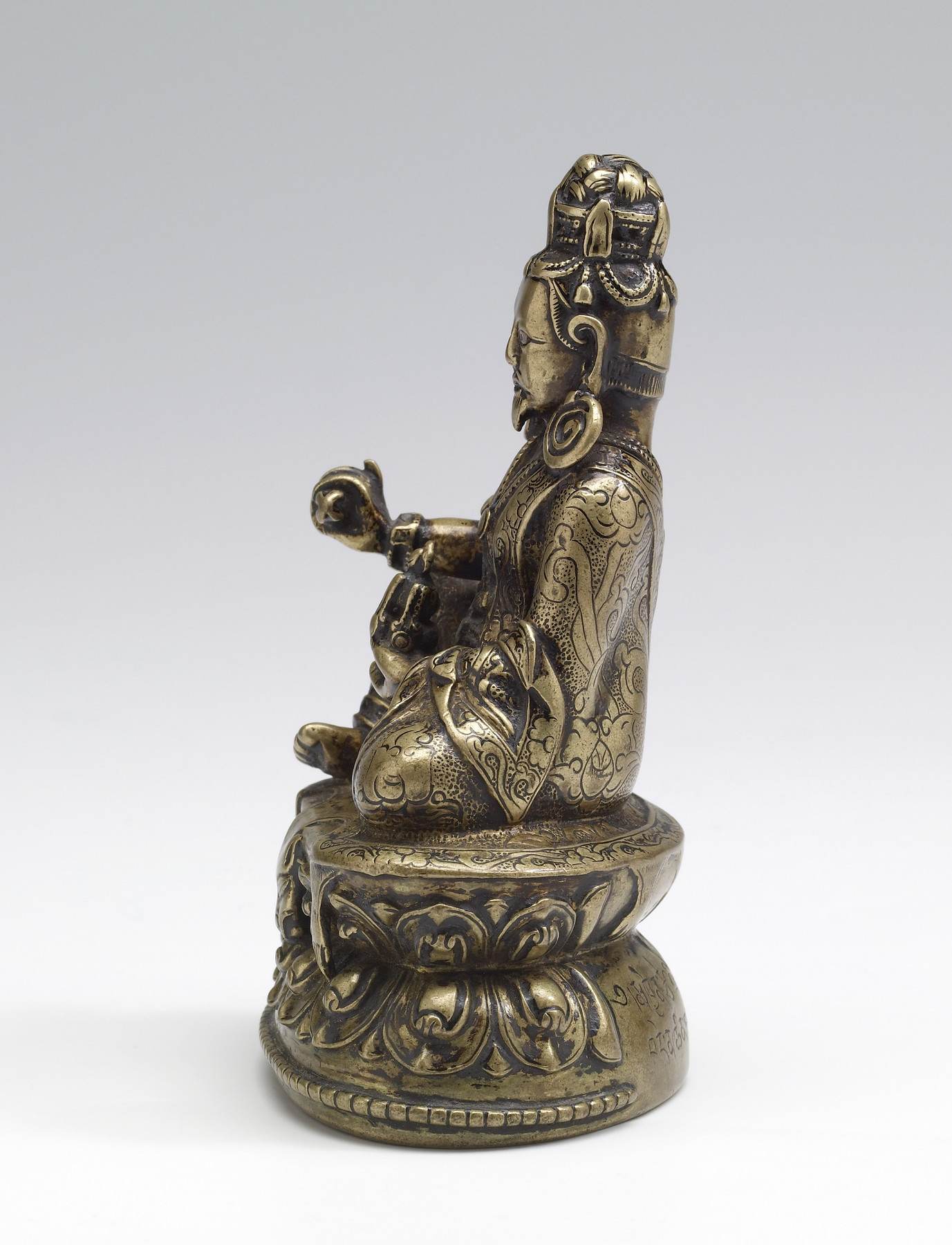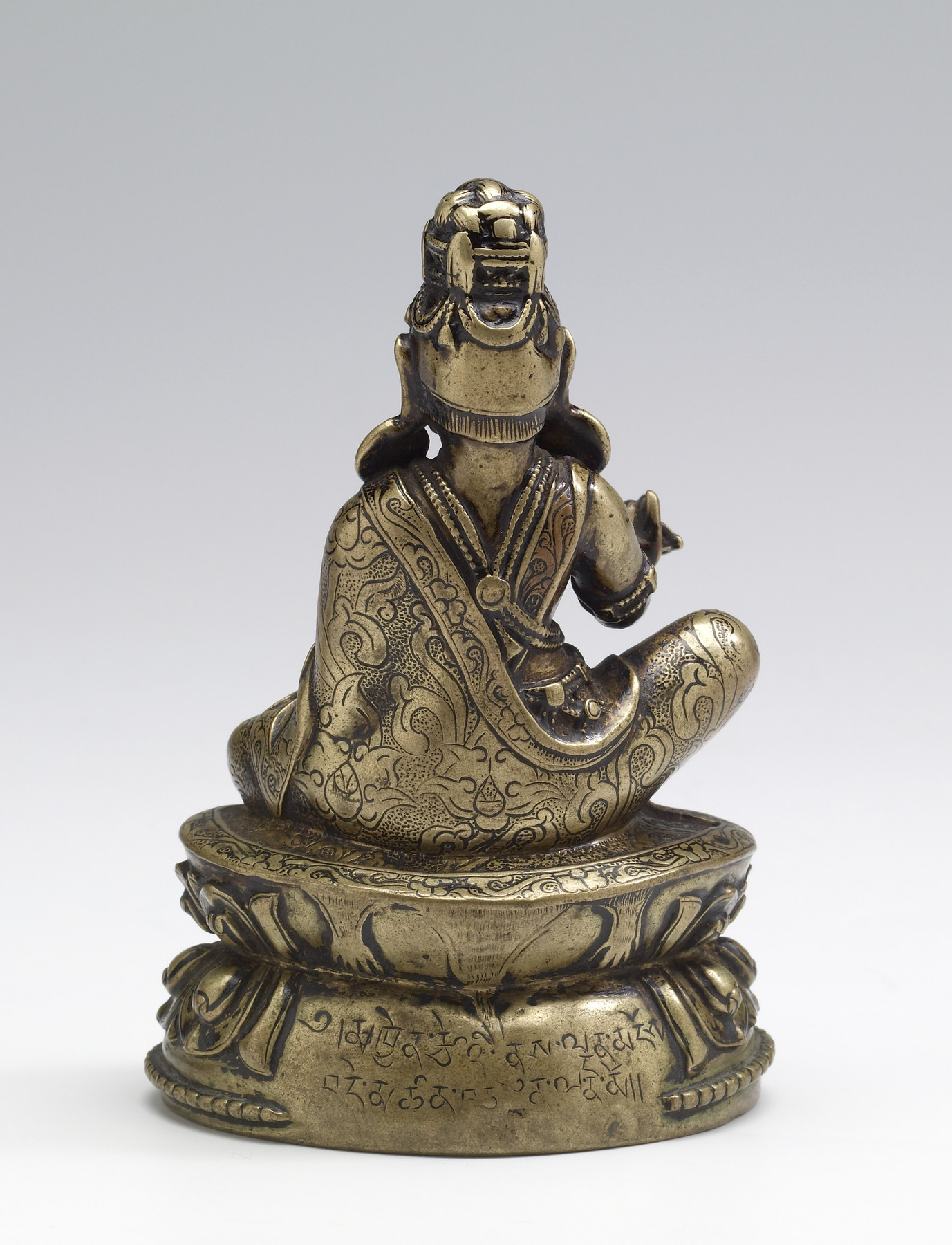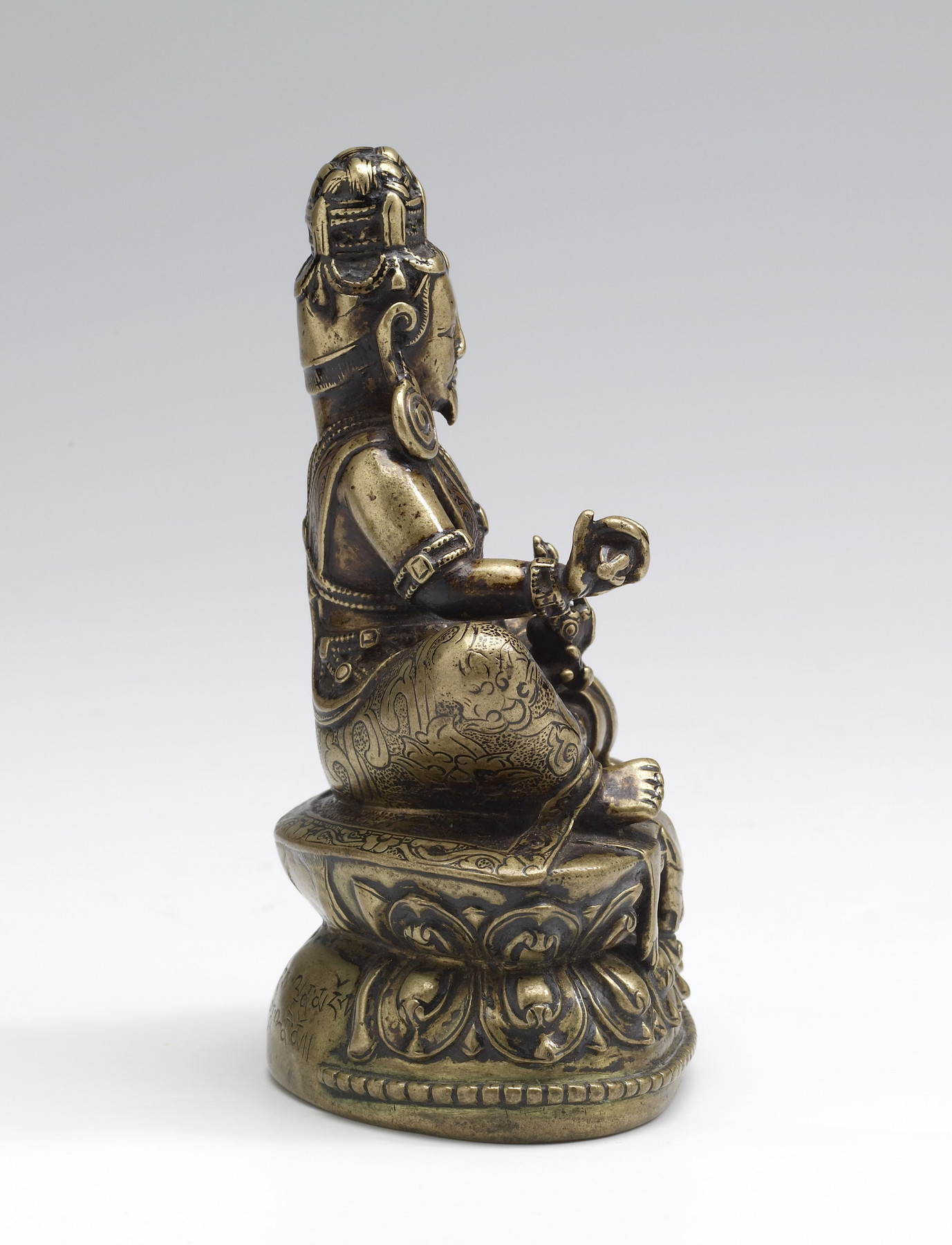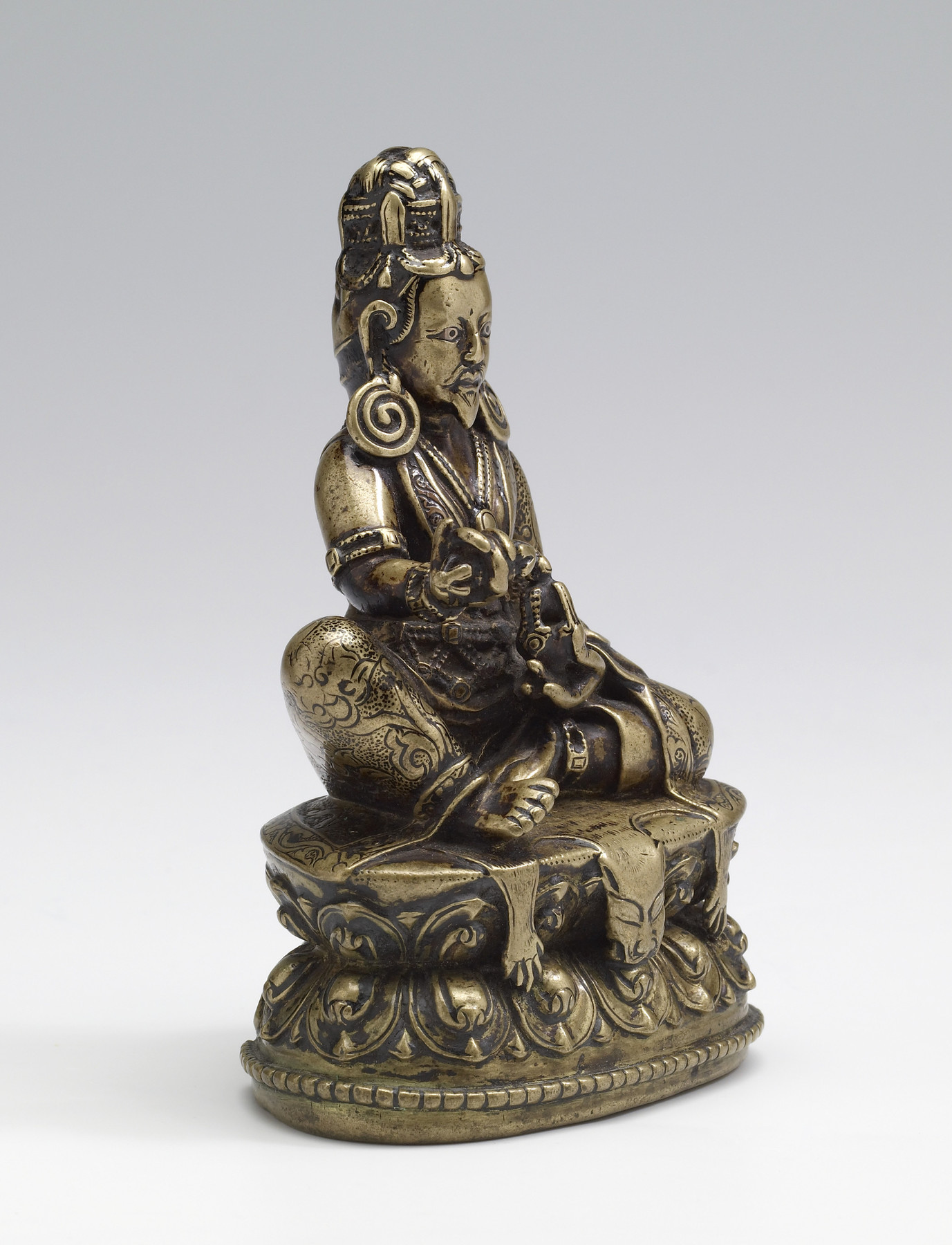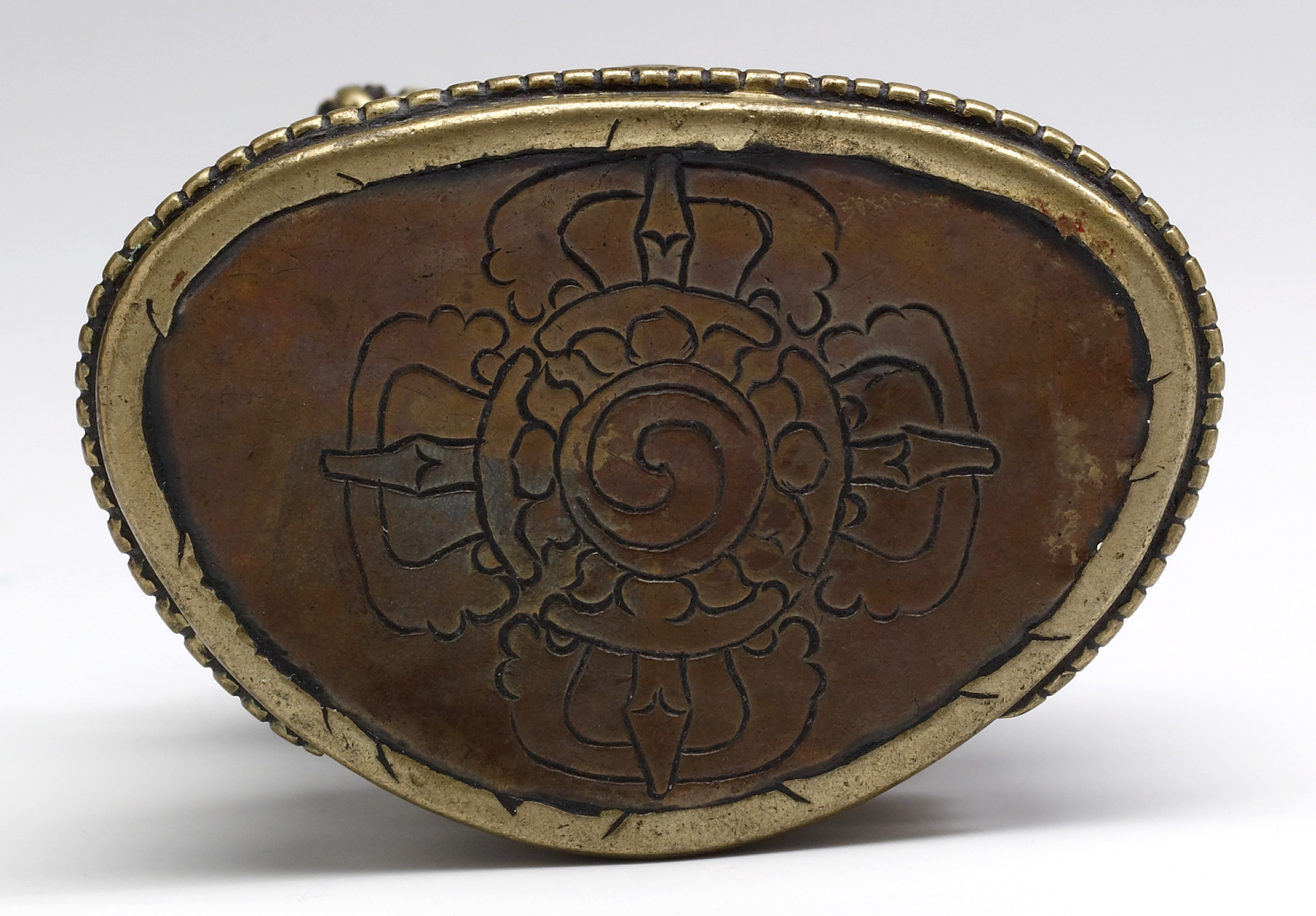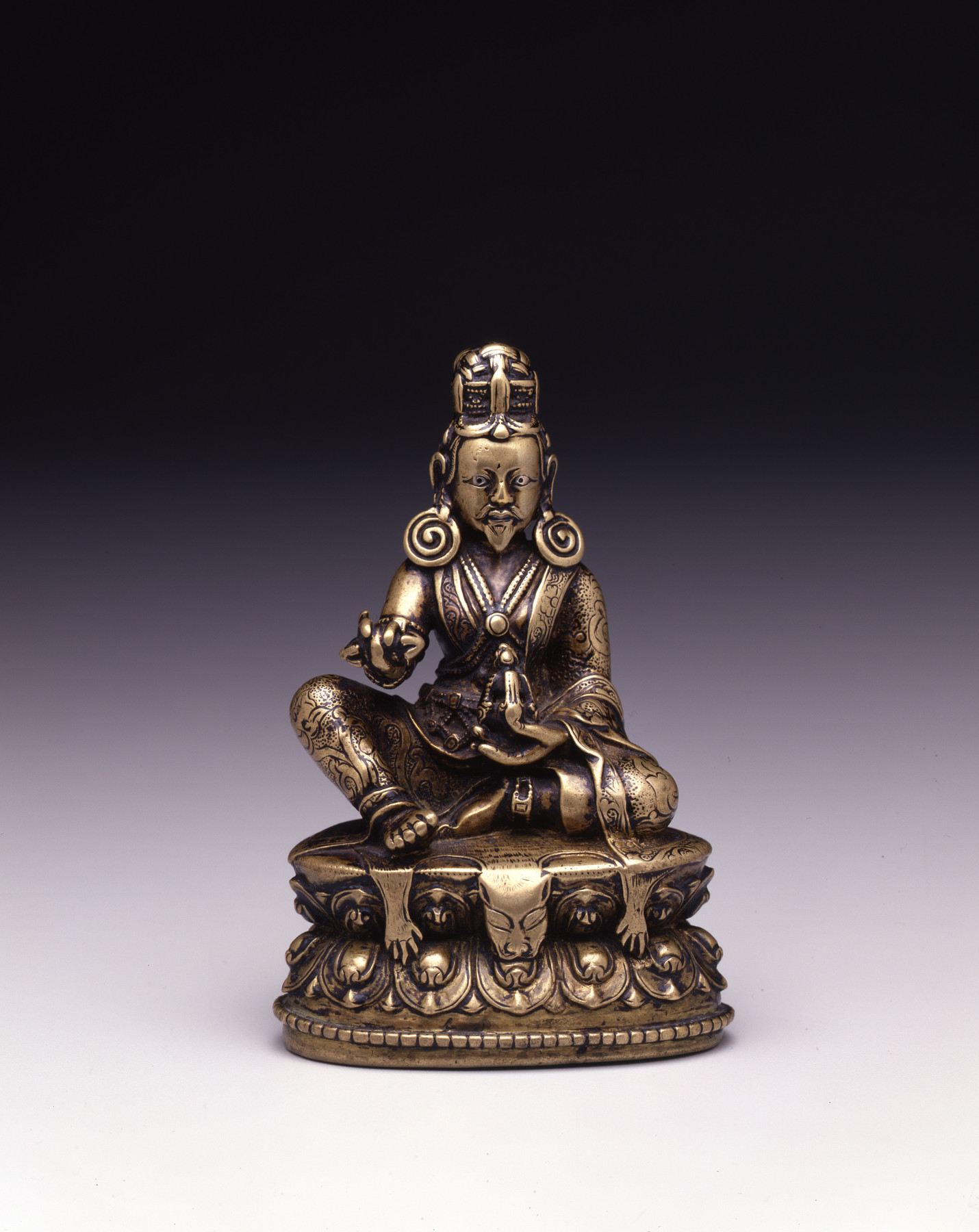Ascetic Master
(India, Nepal, and Tibet)
This figure’s intense gaze signals his yogic power—through ascetic practices and the rejection of mainstream social conventions, he has mastered spiritual knowledge. The animal skin upon which he sits and the bone ornaments he wears—including his prominent spiral earrings—confirm his ascetic identity, but his sumptuous robe suggests a connection to worldly life. In his right hand he holds a "vajra," a tantric Buddhist ritual implement that symbolizes the indestructibility and clarity of the enlightened mind. His left hand supports an auspicious vase, symbolizing abundance and longevity.
An inscription on the back of the base praises the figure depicted as "one who has the power of wisdom and compassion," but the epithets do not identify him with certainty. He may be the Tibetan Buddhist teacher and scholar Tsangnyon Heruka (1452–1507), who is similarly depicted with a goatee, spiral earrings, and elaborately piled hair. However, Tsangnyon typically holds a skull cup, and his clothing is usually limited to bone ornaments that only minimally cover his body, exposing a torso and belly that swell with yogic breath.
Inscription
Provenance
Provenance (from the French provenir, 'to come from/forth') is the chronology of the ownership, custody, or location of a historical object.
John and Berthe Ford, Baltimore; given to Walters Art Museum, 2002.
Conservation
| Date | Description | Narrative |
|---|---|---|
| 6/27/2017 | Examination | Cleaned for exhibition. |
| 6/27/2017 | Examination | The inlaid silver eyes were tarnished. The eyes were cleaned using precipitated chalk in a distilled water slurry. The eyes only were coated with a lacquer to reduce tarnishing. |
Geographies
Tibet (Place of Origin)
Measurements
H: 4 9/16 × W: 3 1/16 × D: 2 1/8 in. (11.6 × 7.8 × 5.4 cm)
Credit Line
Gift of John and Berthe Ford, 2002
Accession Number
In libraries, galleries, museums, and archives, an accession number is a unique identifier assigned to each object in the collection.
In libraries, galleries, museums, and archives, an accession number is a unique identifier assigned to each object in the collection.
54.3009

